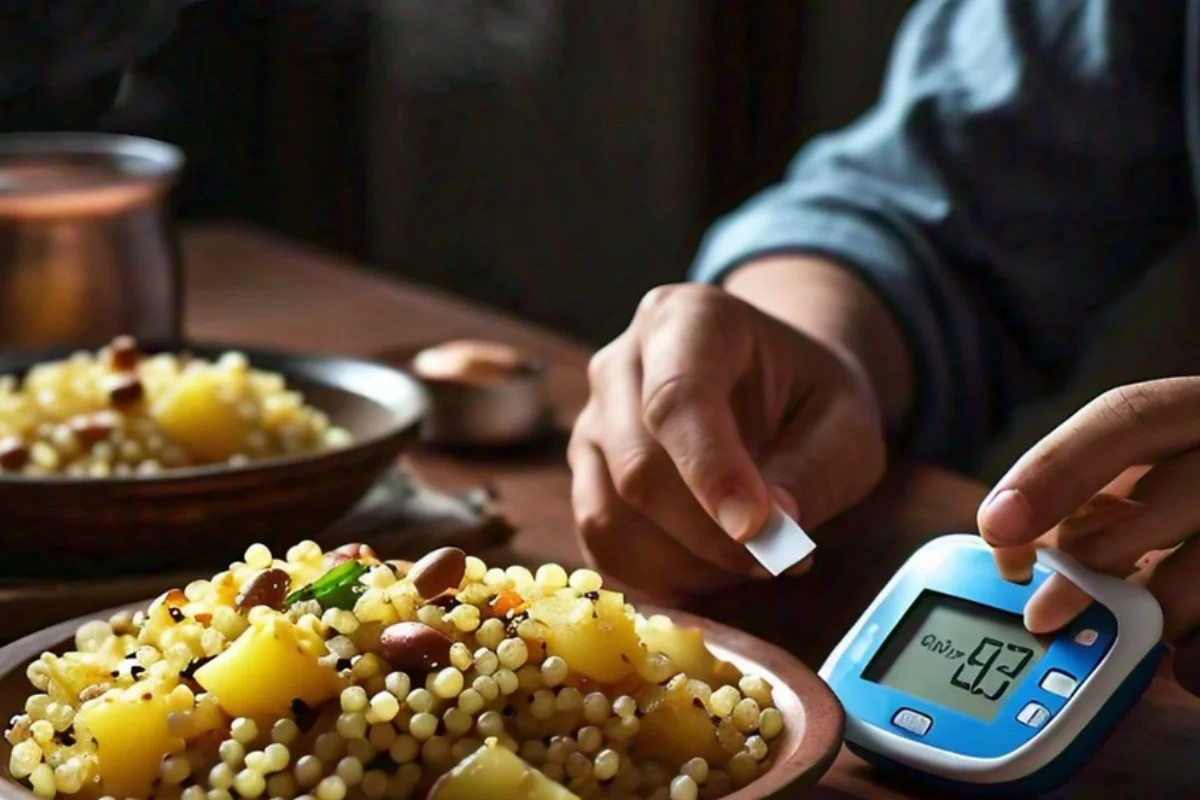When your sacred fasting snack pulls a surprise twist like a plot from a thriller, it’s definitely worth a double take. Picture this: what you thought was a harmless treat suddenly sparks a sugar rollercoaster that leaves you questioning your diabetes management like never before. Sometimes, tradition and glucose don’t mix as smoothly as you’d expect. Welcome to the sabudana saga.
Diabetes Management Tips When Fasting With High-Glycemic Foods
When you’re managing diabetes and also observing a fast, understanding how high-glycemic foods like sabudana affect your body becomes essential. FITJAM points out a few facts that most people overlook. Sabudana isn’t even a traditional Indian grain—the Portuguese introduced it around the 1940s.
It’s made from tapioca starch and is highly refined, much like maida. That means your favourite sabudana khichdi or vada is mostly pure carbohydrate with almost no protein, fibre, or essential minerals to slow down sugar absorption.
Because of this, sabudana digests very quickly and releases glucose into the bloodstream at a rapid pace. You may feel an instant burst of energy, but it’s often followed by sudden tiredness and a “crash.” For people with diabetes, this sharp spike in blood sugar can be particularly risky and can completely disturb otherwise stable sugar readings during fasting.
Knowing these hidden truths about sabudana can help you make more mindful choices and protect your blood sugar control while still honouring your fast.
Why Sabudana Can Spike Blood Sugar During Religious Fasting?
Sabudana’s high glycemic index results in rapid absorption, causing a quick surge in glucose levels. For fasting individuals managing diabetes, this effect can be risky. The lack of fiber and protein means there is no buffer to slow sugar absorption.
This quick spike is followed by energy crashes, challenging fasting and diabetes control. Awareness of sabudana’s impact helps prevent blood sugar volatility during fasting.
Smart Fasting Swaps That Support Energy Without Sugar Overload
To support diabetes management during fasting, choosing low glycemic, nutrient-rich options is key. These alternatives provide steady, long-lasting energy:
- Roasted makhana
- Boiled potato with curd
- Coconut water
- Banana or papaya
These foods contain fiber, protein, and minerals to maintain balanced energy and blood sugar levels. Swapping sabudana for these options helps with fasting and better diabetes control.
Sabudana’s high glycemic nature can undermine fasting and diabetes management by causing sharp sugar spikes. Choosing smarter, balanced foods maintains energy and supports stable blood sugar.
Disclaimer: This content, including advice, provides general information only. It is not a substitute for qualified medical opinion in any way. The methods and claims mentioned in this article should be considered as suggestions only; DNP India neither confirms nor denies them. Always consult a doctor before following any such suggestions/treatments/medications/diets.
